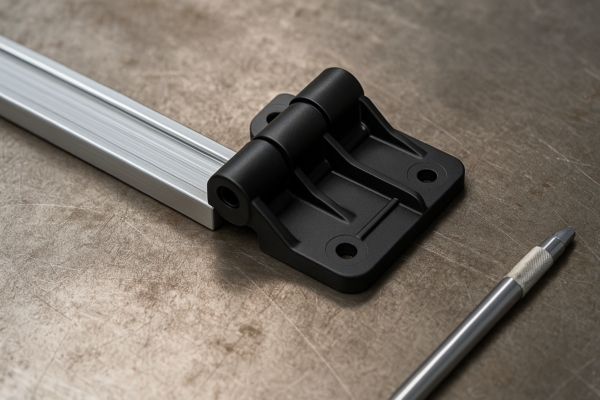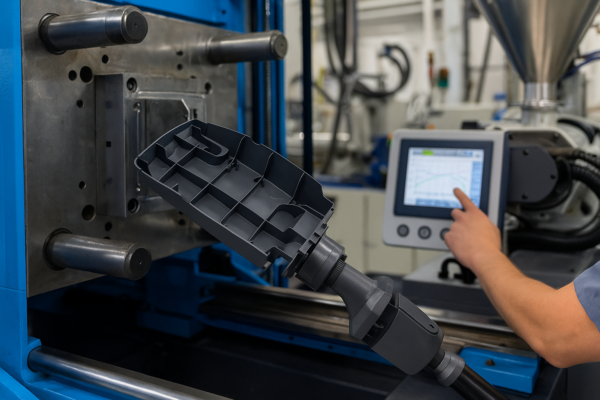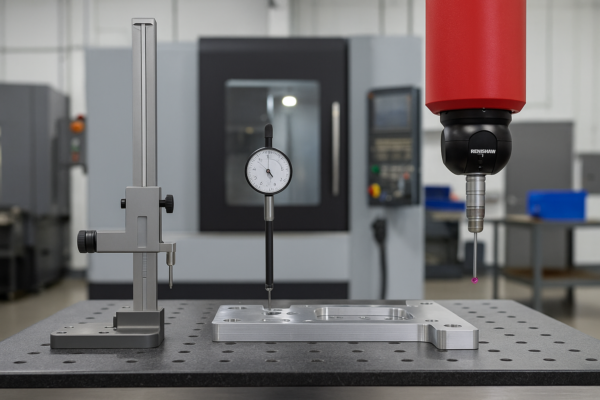Why do blacksmiths hit the steel when forging?
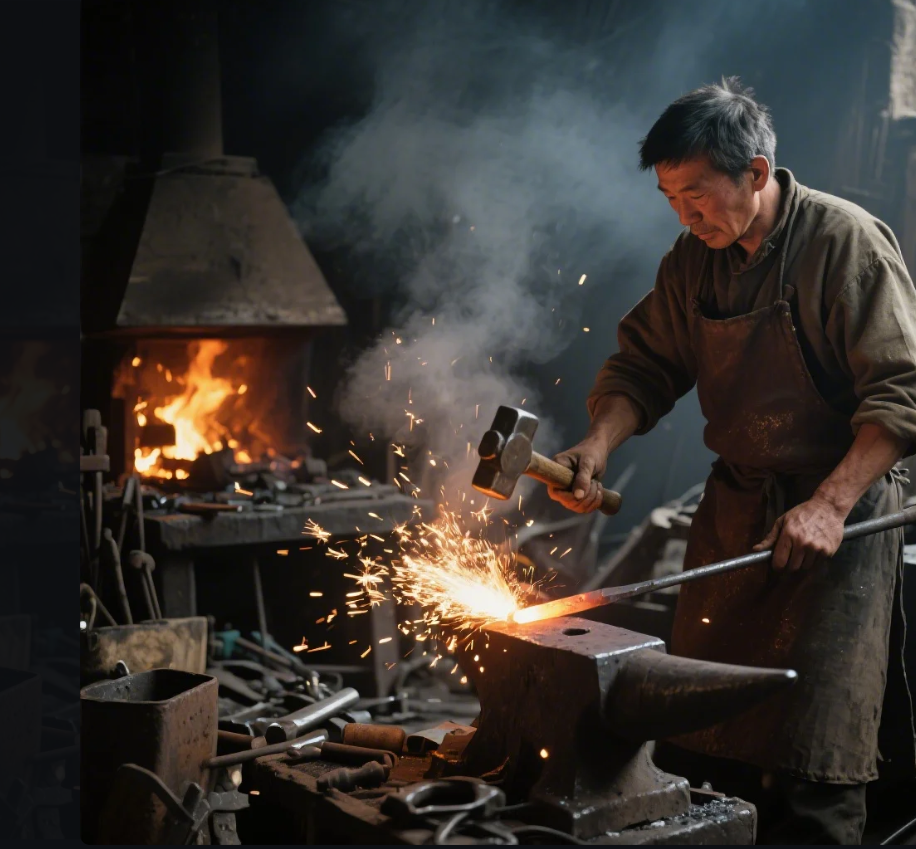
The art of blacksmithing has been around for centuries, and one of the most fundamental actions in the forging process is hitting the steel with a hammer. But why do blacksmiths strike metal during the forging process? The answer lies in shaping the metal, improving its properties, and ensuring that it is the right material for its intended use.
Snippet paragraph: Blacksmiths hit the metal when forging to shape it, refine its properties, and increase its strength. Let’s explore the reasons behind this age-old technique.
In this article, we’ll explore why blacksmiths hit metal, tap the anvil, and why these actions are essential to the forging process.
Why do blacksmiths hit metal?
Blacksmiths hit metal during forging for several reasons. The primary purpose of striking the metal is to shape it, but there are also key changes to its properties, such as strength and hardness, that are achieved through hammering.
Snippet paragraph: Hitting the metal helps shape it, refine its grain structure, and increase its strength—essential steps in the forging process.

Key Reasons for Hitting Metal:
- Shaping the Metal: The most immediate reason blacksmiths hit metal is to change its shape. By applying force to hot metal, blacksmiths can bend, elongate, or flatten the material to achieve the desired form.
- Refining the Grain Structure: Hammering helps refine the metal’s grain structure, aligning the crystals in the metal to make it stronger and more durable. This process is called "work hardening."
- Reducing the Size: Hitting the metal reduces its overall size. For example, when making a blade, blacksmiths use the hammer to gradually reduce the size of the piece while maintaining its thickness in the appropriate areas.
- Uniformity and Smoothness: Hitting the metal with controlled strikes allows blacksmiths to smooth rough surfaces and ensure uniformity in thickness or dimensions, ensuring the piece performs as expected.
The Role of Heat in Hammering:
The metal is typically heated to a high temperature before striking, usually between 1,200°F and 2,000°F, depending on the material. At these temperatures, the metal becomes malleable, which allows it to be shaped easily under force.
Why does a blacksmith tap the anvil?
In addition to hammering the metal, blacksmiths often tap the anvil. This seemingly small action is part of a process that helps with the precision and accuracy of the forging.
Snippet paragraph: Tapping the anvil is a technique used to maintain control over the piece, realign the metal, and provide the blacksmith with feedback.
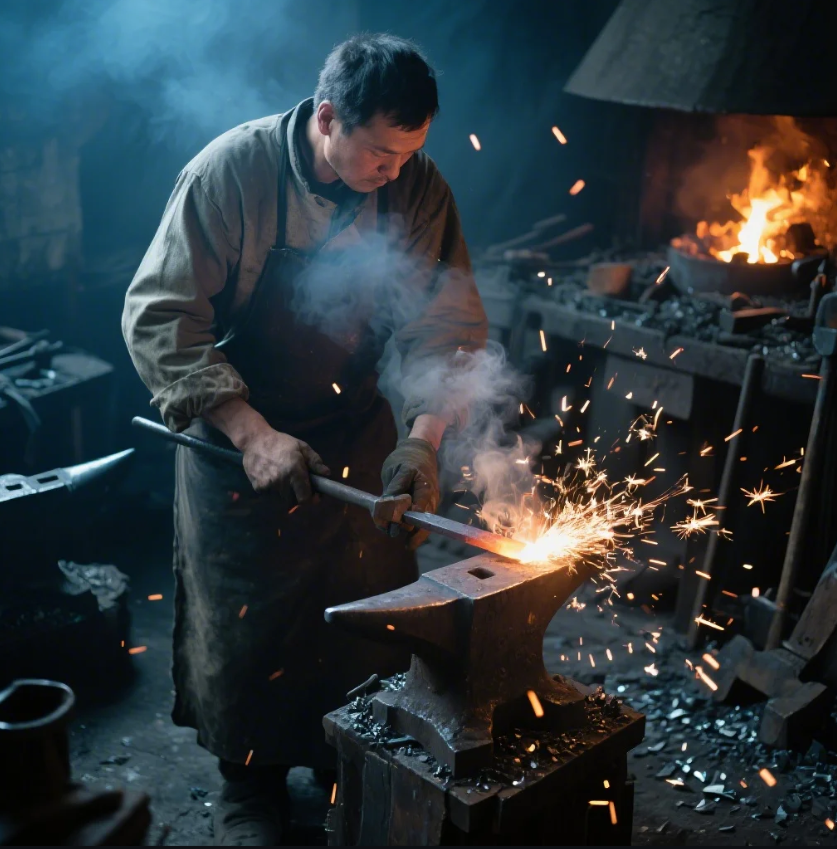
Reasons for Tapping the Anvil:
- Realigning the Metal: When a blacksmith is forging a piece, tapping the anvil helps realign the metal in the desired direction. If the piece starts to warp or bend in the wrong direction, a quick tap can correct it.
- Feedback for Precision: The anvil serves as a stable base, and tapping it gives the blacksmith feedback on the metal’s behavior. If the piece is moving or deforming in the wrong way, the sound and feel of tapping the anvil provides a signal to adjust the hammering technique.
- Control During Forging: By tapping the anvil in between hammer strikes, blacksmiths can maintain better control over the piece, ensuring it’s shaped evenly and accurately.
- Stress Relief: Tapping also helps relieve internal stresses within the metal that may build up during the forging process, ensuring that the metal doesn’t crack or break.
How Tapping Affects the Metal:
When the blacksmith taps the anvil, it also allows the force from the hammer to be evenly distributed. The anvil acts as a solid base, and this ensures the metal doesn’t absorb too much shock, which could cause unwanted deformations.
Why does hammering metal make it stronger?
Hammering metal during the forging process has a significant impact on its strength. Through repeated strikes, the structure of the metal changes in ways that improve its durability and toughness.
Snippet paragraph: Hammering metal refines its structure, aligning its grains and making it stronger and more durable.

The Process of Work Hardening:
When a blacksmith hammers metal, it causes the metal’s crystalline structure to shift. The individual grains of the metal are compressed and aligned in the direction of the force applied, making the metal stronger. This is known as "work hardening," and it enhances the metal’s ability to resist wear, fatigue, and fracture.
- Work Hardening: The repeated hammer strikes compress the metal’s structure, making it denser and more resistant to cracking. This is especially useful in metals that are prone to wear, such as those used in tools or weapons.
- Refining the Grain Structure: The hammering process forces the metal’s grain structure to align and become more uniform, which improves the metal’s strength and helps it maintain its integrity under stress.
Hardness vs. Toughness:
Hammering metal increases both its hardness and toughness:
- Hardness refers to the material’s ability to resist surface deformation.
- Toughness refers to the metal’s ability to absorb energy before breaking.
By hammering metal, blacksmiths enhance both qualities, making the metal stronger overall.
What do they sprinkle on steel when forging?
During the forging process, blacksmiths often sprinkle or apply substances to the steel to help with heat control, prevent oxidation, and improve the metal’s final properties.
Snippet paragraph: Blacksmiths use various materials, like sand or borax, to protect steel, maintain temperature, and reduce impurities during forging.

Common Materials Sprinkled on Steel During Forging:
- Borax: Borax is a common flux material used during forging. It helps reduce oxidation and scale buildup on the steel surface, ensuring that the steel is clean and free from impurities when it is worked. Borax also helps the steel maintain its malleability.
- Sand: Some blacksmiths use sand, particularly for specific types of forging, to help absorb impurities and promote a smoother finish on the metal.
- Charcoal: In some cases, charcoal or other forms of carbon are added to the forge to control the carbon content of the steel and influence the final properties of the metal.
- Water or Oil: Occasionally, water or oil may be sprinkled on the metal to cool it quickly, especially during the quenching process, which hardens the steel.
Why These Materials Are Used:
- Oxidation Prevention: By sprinkling these substances on the steel, blacksmiths can minimize oxidation, which can weaken the metal and create surface imperfections.
- Temperature Control: These materials help maintain the temperature of the metal during forging, which is essential for controlling the hardness and overall quality of the final product.
- Purity and Finish: Using the right flux materials helps ensure that the steel remains pure and smooth throughout the forging process.
Conclusion
Hitting the steel during forging serves several crucial purposes, from shaping the metal to improving its grain structure and increasing its strength. Tapping the anvil provides important feedback and helps ensure precision in the forging process. Hammering the metal refines its structure through work hardening, making it stronger and more durable. Additionally, blacksmiths use materials like borax or sand to control temperature, prevent oxidation, and improve the quality of the steel.
Understanding these techniques is essential for anyone interested in blacksmithing or metalworking, as they highlight the skill and artistry required to transform raw metal into functional and durable objects. Whether you are a professional blacksmith or a hobbyist, these methods are fundamental to the craft.


